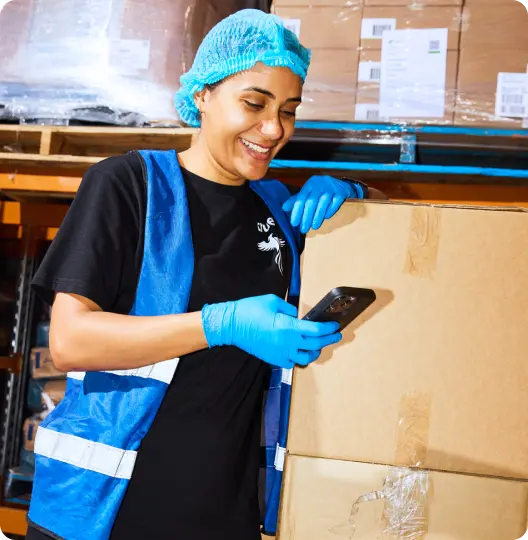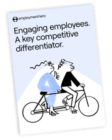Key learnings from HR Tech Festival Asia 2023
Gain valuable and thought-provoking insights from industry leaders which will shape your people management strategies for the future.

Update: Check out the latest key learnings from HR Tech Festival Asia 2024.
Last week, we had the pleasure of attending the HR Tech Festival Asia 2023 in Singapore and boy oh boy was it a power-packed event! It was also Employment Hero’s first in-person event in Singapore.
With the theme ‘Engage. Sustain. Thrive. Navigating the New Paradigms of People and Work’, the HR Tech Festival highlighted the importance of leveraging technology to enhance the employee experience, and staying up-to-date with the latest HR trends to remain relevant, as the future of work evolves so rapidly.
It was the largest reunion for the regional HR industry since the pandemic, and our team was blown away by the incredible concentration of thought leadership, curiosity and great energy, all in one place.
We were thrilled to be exhibiting amongst 100 other leading global brands and start-ups, but most of all, we loved meeting every single one of you who came to say hello and learn about Employment Hero. And we sure hope you love the complimentary tote bags we gave out, along with our branded pens and mugs!
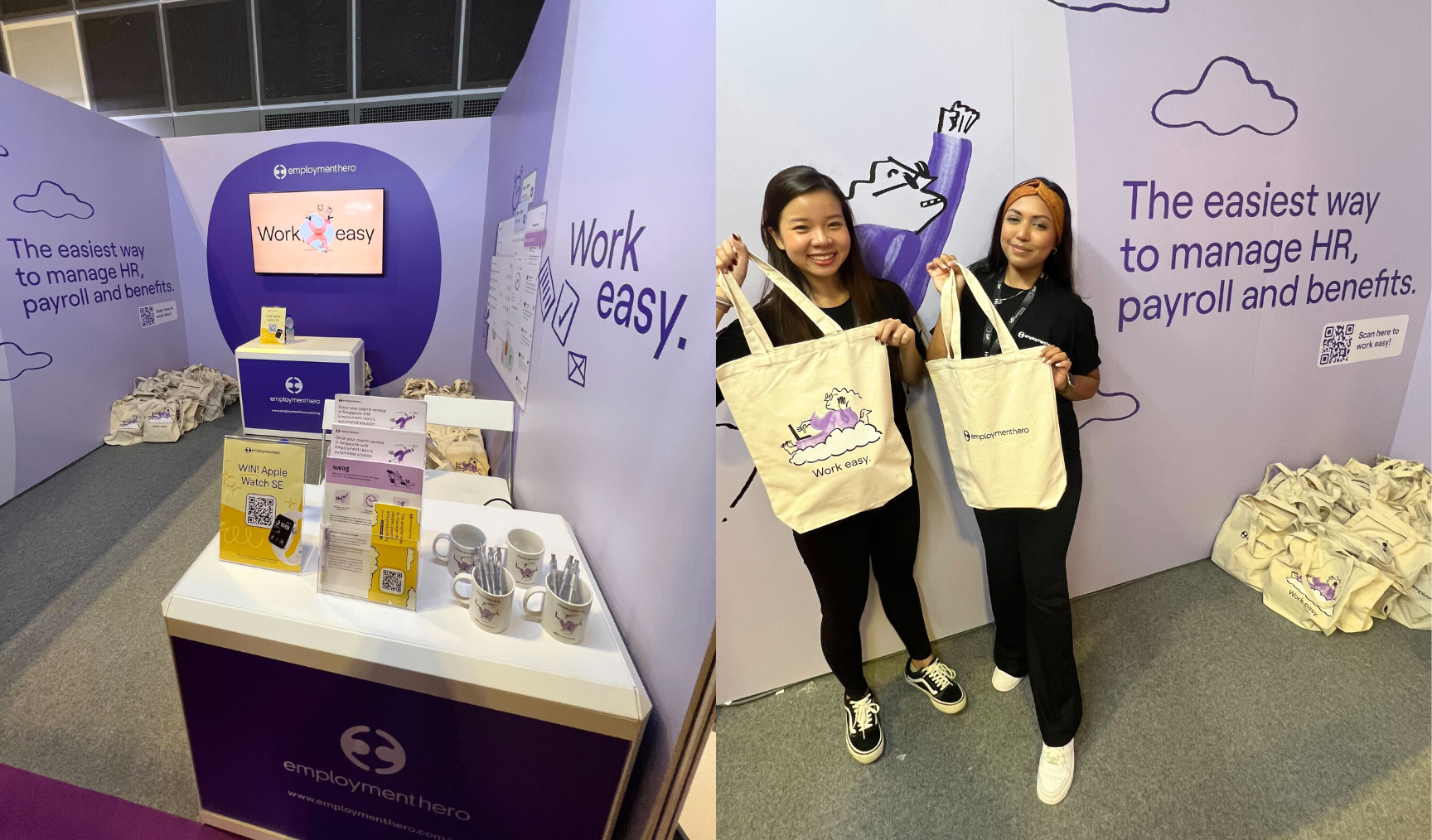
We had access to the HR Tech Theatre and Power Talk Stage where we gained lots of valuable insights from industry leaders, which we are keen on sharing with you. Regardless of whether you attended the event or not, we hope you’ll find these key learnings thought-provoking and influential in shaping your people management strategies for the future.
Grab a cup of coffee or tea and get comfy, because we’ve got lots of exciting topics to cover. Here’s what we’ve learnt…
1. Governmental support in helping the HR community thrive

Senior Minister of State for Defence and Manpower, Zaqy Mohamed, announced the launch of the HR Industry Transformation Plan, alongside many other exciting initiatives for the HR industry during his opening speech for the HR Tech Festival.
The HR Industry Transformation Plan, also known as the HR ITP, is a five-year plan to strengthen the HR profession in Singapore. It focuses on two key thrusts:
- Building enterprise HR capabilities to support business transformation; and
- Uplifting the HR workforce with relevant skills and mindsets.
He emphasised the need for employers to view their HR teams as key assets and partners that will contribute to the success of their business, because having a “strong and strategic HR enables employers to stay competitive, attract and grow the right talent to support business objectives, and seize new opportunities.”
He also cited a Josh Bersin study with IBM, which found that companies with strong HR capabilities are 5.5 times more likely to be significantly more profitable than their peers, and six times more likely to be more innovative. Imagine what you could achieve with an effective HR!
Building enterprise HR capabilities
On top of the Productivity Solutions Grant (PSG) which helps businesses invest in HR technology, the government is also providing more tools to help employers build strategic HR and workforce planning capabilities, such as:
- The MOM’s Workforce Insights Tool, which provides companies with salary and non-monetary benchmarking insights across industries, to help with workforce hiring and retention. It also enables companies to view their performance on firm-related attributes for the Complementarity Assessment Framework (COMPASS);
- A Workforce Singapore’s HR Tech Transformation Programme, which will continue to support companies in redesigning HR jobs by adopting technology to meet business goals; and
- A new Job Redesign Centre of Excellence helmed by the Institute for Human Resource Professionals (IHRP) will be set up, as a one stop centre to help companies navigate their job transformation journey and gain access to resources for their job redesign needs.
Uplifting the HR workforce
The second thrust of the HR ITP, which focuses on equipping HR professionals with future-ready skills and mindsets, addresses continued governmental efforts to strengthen the HR training and support ecosystem. The goal is to make sure more HR professionals get IHRP certified, and to have 15,000 IHRP certified professionals by 2027.
There will also be more curated programmes to help support the skills upgrading and leadership development of HR professionals. IHRP has been appointed as SkillsFuture Singapore’s Skills Development Partner for the HR sector — it will proactively identify emerging HR competencies and prioritise training in these areas.
IHRP is also looking to develop a new People Manager certification for non-HR supervisors, who are often entrusted to do recruitment and support their teams development.
IHRP’s continued support for the HR community
Since 2021, IHRP has introduced seven HR playbooks that address common or sector-specific HR issues. Three more playbooks will be developed over the next 12 months, focusing on skills-based hiring for tech roles, and helping HR in the retail and construction sectors.
There will also be more guided support for SMEs — IHRP will be scaling up their Transformation for Growth workshops, which help SMEs assess their HR maturity through the Human Capital Diagnostic Tool (HCDT), and implementing action plans from relevant playbooks. IHRP will also be introducing the HCDT Navigator in Mandarin later in 2023, in response to industry feedback.
2. Current reward strategies are not future-of-work oriented

Did you know that employers have been paying people the same way for the past 75 years? The last time anything changed in the area of compensation, was in the 1990s with the introduction of flexible benefits. The industry is so fixated on having one size fit all — everyone is paid the same way based on salary benchmarks and pay grades.
But Dr Fermin Diez, adjunct Professor of Human Resources at SMU and at NTU, believes that current reward strategies are not future-of-work oriented. The future of work is already here. But the future of pay hasn’t happened.
Here’s a question Dr Fermin Diez posed to the audience — would you take up:
- Offer A: A $600,000 annual package made up of $360,000 base pay, $120,000 annual bonus target (based on individual, team, and company performance) and $120,000 in equity plan (tied to share prices); or
- Offer B: A $600,000 salary with no other components?
Unsurprisingly, an overwhelming majority voted for offer B. Employees don’t wake up every morning feeling excited and motivated to smash goals and hit targets. That’s likely to lead to burnout. Instead, there are great days and then there are bad days. Having a fixed salary is therefore more attractive than having variable components which make up one’s salary.
So what has changed? Employees now want to work differently. They demand more flexibility and personalisation. And they also need to constantly learn and develop. A new era of work requires more personalisation and employee-centric rewards. Every employee is different, which is why personalised rewards increases their engagement — it enables them to align the rewards they receive to their own unique situation.
To address this, there are new operating models. With remote work, we have borderless workplaces demanding flexible resourcing, we have shifting workforce demographics which drives personalisation, and we have an increasingly diverse workforce in every sense of the word. Growing skill gaps also require lifelong learning. These factors have all changed the way we work, our workforce, and the workplace.
Future-oriented reward strategies
What percentage of employees in your company do you think will be gig or part-time workers in 5 years? Dr Fermin Diez believes that the future of work entails employees working for multiple companies, rather than a single company. You won’t have a single job, but rather, multiple income streams. The proportion of gig or part-time workers is set to continue growing.
Not everyone wants to career climb either — employees are turning down promotions because they want to grow laterally. Gig workers don’t want careers, they want breadth. They want more skills, because having more skills means they can be part of a wider range of projects, and hence earn more money.
So what are some future-oriented pay philosophies? Dr Fermin Diez espouses that we should move towards:
- Pay transparency
- Pay on-demand
- Flexible compensations
- Skill-based allowances
- Personalised options that cater to values, life stages, and needs of employees
- Creative rewards and benefits
- Unlimited annual leave
- Sabbaticals; and
- Broad models to encompass all demographics.
Rather than paying for performance, employers should be paying for potential, skills, development, retention, and location. For example — when we hire, we naturally pay for skills. The concept is to extend this practice to existing employees — by paying for the acquisition and use of new skills. As the needs for different skills change, linking an employee’s pay to training and skills assessment becomes critical. Rewarding them based on the new skills they’ve acquired allows for greater flexibility and personalisation.
The objective is part of a good retention strategy. Traditional ways of attracting, retaining and motivating talent will not necessarily work in a new era of work anymore. There is a need to address the broader employee experience such as wellbeing, talent development, work environment, work location, work schedules and more.
Flexible and personalised pay structures are more suited to all employee types, their needs, and also their motivations or risk profiles. It also mitigates financial stress, and helps with their personal health and well-being.
So, it looks like the future of pay entails a focus on pay equity, transparency of process, and fairness in reward and recognition. Employers need to maintain salary competitiveness to attract and retain quality talent, and pay should move towards prioritising organisational culture.
Now that’s some food for thought for you when you’re assessing current pay structures in your organisation — do you agree or disagree with everything Dr Fermin Diez has put forth?
3. A strong sense of belonging at work boosts everything

Do you employees feel a strong sense of belonging in the workplace? If you’re looking to enhance your employee experience and keep them engaged, adopting Achievers’ belonging model might be a good place to start.
David Bator, the Managing Director of Achievers Workforce Institute (AWI), shared five key elements you need to be aware of that influences an employee’s sense of belonging. Employees need to be:
- Welcomed: Introduced to, and incorporated within, the organisational culture and community.
- Known: Understood, motivated and celebrated as an individual.
- Included: Valued and accepted without reservation.
- Supported: Consistently and meaningfully nurtured and developed; and
- Connected: Developing and maintaining relationships across a diverse population.
Employees who are warmly welcomed and invited to be part of their organisational community are twice as likely to feel a strong sense of belonging. The same goes for employees who feel known — when they gain the due recognition for their hard work, they have a stronger sense of belonging to the company.
How often do you ask for feedback from your employees? According to David, employees who are asked for feedback four times annually are 88% more likely to feel included. Employees with a supportive manager are also 2.2 times more likely to feel a sense of belonging.
When it comes to connection, employees who feel that their company supports them in building meaningful friendships at work are 2.4 times more likely to feel a sense of belonging. Having strong connections are important — it makes it easy for your employees to access people and skills within the organisation. And that enables them to be productive from anywhere.
Overall, employees with a strong sense of belonging are three times more likely to be engaged in their role, and three times more likely to be productive, resilient, committed, satisfied and enthusiastic.
If anything, these statistics show just how important an employee’s sense of belonging to the organisation is.
Think about the ways you can involve your employees within the organisation — how can you encourage them to co-create their employee experience? Only 52% of companies ask their employees for feedback on company culture, and only a mere 18% believe that the leadership team will do anything about the feedback they’ve provided. That says a lot about how much trust and confidence employees have in being heard.
Now that you know about the five pillars of belonging — it’s time to assess how well your organisation is currently doing in these areas. Think about how they apply to your organisation and what gaps you can identify so you can implement some actionable plans.
4. The decline of job descriptions in a ‘BANI’ world
The World Economic Forum’s Future of Jobs Report 2023 states that with the rise of artificial intelligent tools like ChatGPT and technology advancements, an estimated 85 million jobs are expected to be displaced by the year 2025. However, 69 million new jobs will be created.
With more skills becoming irrelevant and new skills replacing them, the speed of change will be incomprehensible. And as we navigate a rapidly changing landscape, one thing is certain — human skills and competencies to use and develop new advanced technologies is a critical challenge.
So what’s changing?
We’re grappling with hybrid workplaces, technology advancements, globalisation, an imminent recession, a multi-generational workforce, the Great Resignation, and more. There are layers and layers of volatility. Which is why Gail Matthey, Senior Manager at Udemy, explains that we are no longer living in a VUCA world (volatile, uncertain, complex, and ambiguous).
We are now in a BANI world — which is brittle because it’s easy to shatter, anxious because we fear that choices will be wrong, non-linear because there is disconnection between cause and effect, and incomprehensible because our ability to find an answer for everything is gone.
In order to succeed in such an environment, organisations need to foster a culture of continuous learning and adaptation.
We need a new model for upskilling. A model where it can tightly align with business, and react fast to changes in the market. It needs tools that will self sustain, pick up trends and adapt to change. And that new way is the talent marketplace.
But what is the talent marketplace exactly?
It’s about matching skills to the work that needs to be done, in order to build workforce agility. Roles should be seen as a collection of skills, rather than a fixed job description that is too static and doesn’t create the flexibility needed to pivot on a dime, or change your business model when needed.
As internal talent marketplaces become more widespread, the days of formal job descriptions may be numbered.
This new operating model for work and the workforce is also known as the skills-based organisation. Deloitte explains it as how, “people can be freed from being defined by their jobs and instead be seen as whole individuals with skills and capabilities that can be fluidly deployed to work matching their interests, as well as to evolving business priorities.”

Skills that might be relevant for a role today might not be relevant anymore tomorrow, or might require you to have a different proficiency level in it. Having a skills-based approach enables you to retain key talent whilst providing them with the opportunity to continuously upskill and reskill, enabling a shift to other business units or career development. That’s why it’s so important to lead through a culture that reinforces learning.
When you ensure that your employees are ready to pivot and adapt as needed to accelerating and unpredictable change, you will be better positioned to come out ahead of the competition.
As for how you plan for the future when you don’t know what the future looks like. Ever heard of the saying — when you fail to plan, you plan to fail?
In today’s context, Gail reckons the answer should be: you don’t plan to fail, you fail to plan to pivot.
5. Building a resilient and adaptable workforce in times of scarcity

Amidst times of uncertainty fuelled by geopolitical instability, inflation, and recessionary fears – companies in Southeast Asia are faced with the daunting task of making swift and difficult decisions that can have a profound impact on their workforce.
Unfortunately, there is no universal solution to the headwinds that will continue to reverberate throughout 2023, which means that business leaders and managers must be ready to transform the way they hire and retain talent. But where should they start when it comes to building a high-performing team? Are there any new opportunities to be found during an economic downturn?
Yeo Puay Lim, Commercial Director at Glints, shared some insights on how employers can turn times of adversity into an advantage.
But before we jump into that, let’s take a step back and review how the talent market looks right now. Here are some key statistics to know:
- Tech roles remain high in demand. The earning power of tech talent is 38% higher than non-tech talent.
- Engineering remains the most sought after role, followed by product and data.
- Product managers saw the highest jump in salary increase — 27% higher than in 2021.
- The top three roles that companies are hiring for in 2023 are: software engineers, business development and sales, and PR and marketing.
- Singapore remains the most expensive market to hire in, with tech talent being paid three times more than in Indonesia or Vietnam.
What these statistics show is a window of opportunity, because talent sourcing has become globalised. There is clearly a growing appetite for cross-border remote hiring as companies become more prudent and cost-conscious.
So how should businesses adapt?
Growing a business and building a team in this current climate will be challenging, which calls for a regionally distributed talent strategy. When faced with a stressful environment where you seem to only have two options — to stop hiring or stop growing — Yeo believes that making strategic hires and resource management is the winning approach.
Wondering if you will gain more from hiring in a different market?
Many companies have done it successfully by kickstarting their expansion efforts and setting up remote teams that fit their requirements. Yeo shared a few case studies where companies have created new teams in Indonesia — because they couldn’t find local talent and need to fill positions quickly whilst remaining cost-efficient. When traditional recruitment processes are too slow, local talent is too expensive, and competition is too fierce, it might be time to focus your efforts elsewhere.
Utilising an employer of record (EOR) service will enable you to hire based on skills, not location — and empower you to connect with the best talent globally, without all the hassle of compliance and paperwork.
The wrap up
There’s been so much chatter about the future of work. You’ve probably heard it all through terms like AI, flexibility, agility, pivoting, personalisation and more being mentioned in discussions constantly.
One thing is clear though, as we look ahead companies will continue to face recruitment and retention challenges in such tumultuous times.
Before we go, we’ll leave you with the three main things HR leaders need to focus on:
- The future of work: Consider how work will evolve with technologies such as AI, how pay structures need to change, and move towards a skills-based model that aligns with business needs and goals.
- The future of the workforce: Identify relevant skills for business growth, facilitate continuous learning, and provide employees with development opportunities to stay competitive.
- The future of the workplace: Embrace flexible work arrangements and build a workplace culture that fosters a sense of belonging and is inclusive towards distributed talent.
That’s a wrap — we look forward to seeing you at our next event!
Check out our Talent Insights Report for more valuable insights on hiring, retention, and overall employee sentiment in Singapore.
Related Resources
-
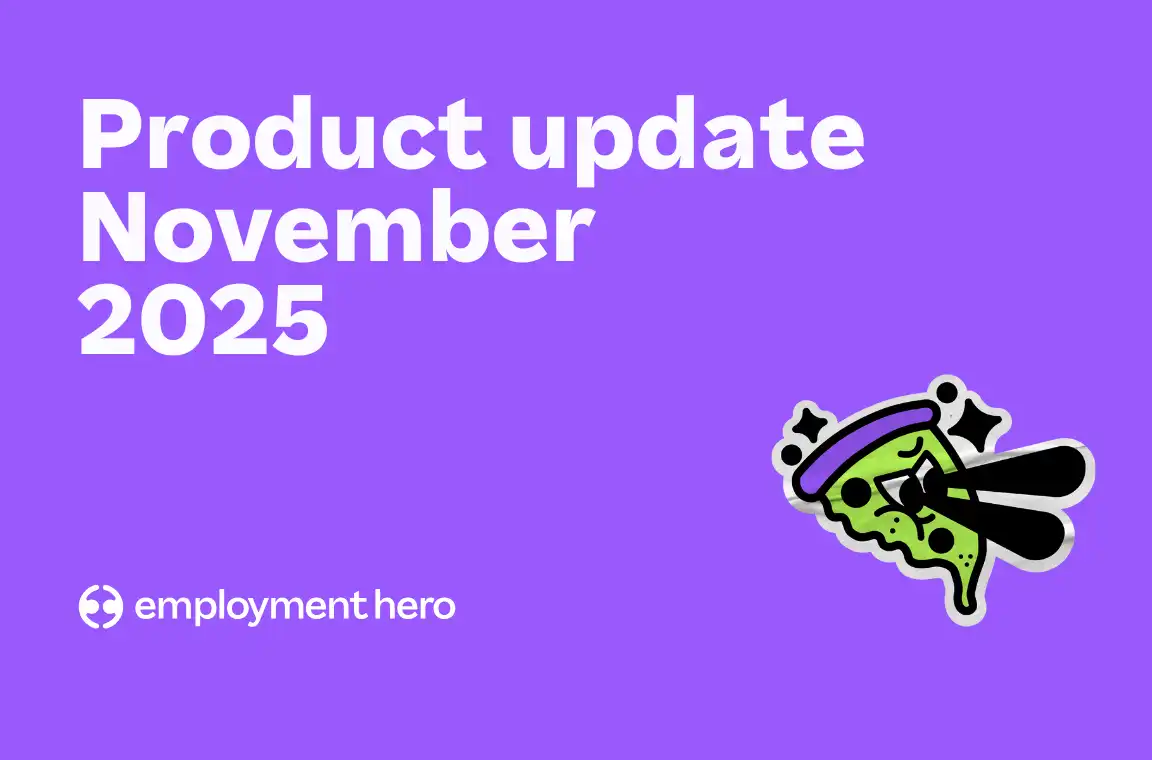 Read more: Product Update: November 2025
Read more: Product Update: November 2025Product Update: November 2025
Welcome to the November 2025 product update from the Employment Hero team. We’ve got lots to share around Workflows, Rostering,…
-
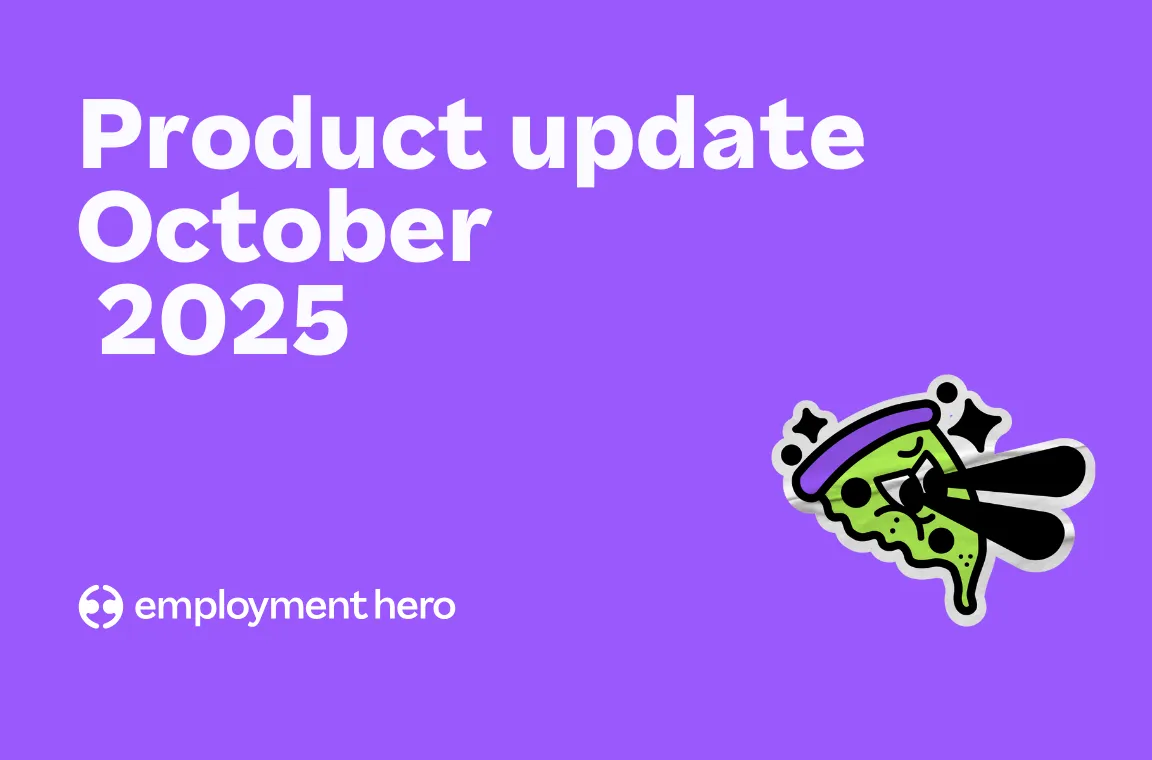 Read more: Product Update: October 2025
Read more: Product Update: October 2025Product Update: October 2025
Our October 2025 update is here for Singapore. Discover OCBC remittance advice, leave balance checks, rostering, timesheets and more. Read…
-
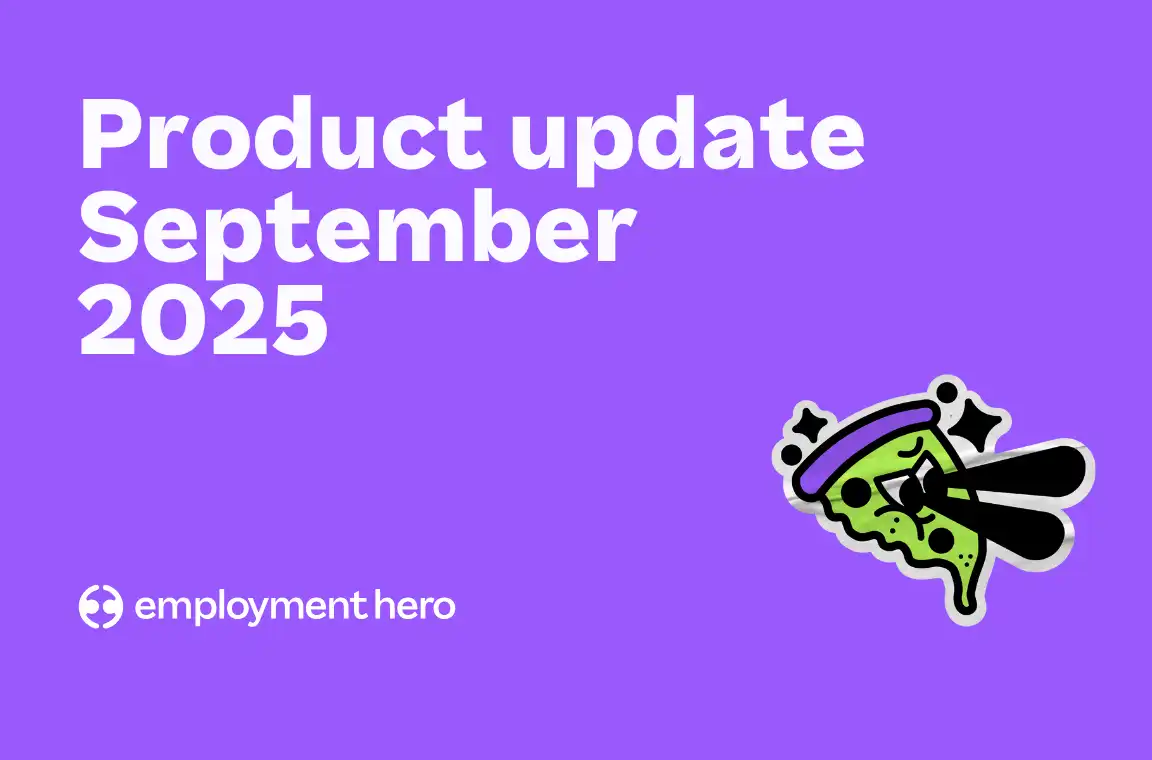 Read more: Product Update: September 2025
Read more: Product Update: September 2025Product Update: September 2025
A big hello from the Employment Hero Product team, and welcome to the September 2025 Product Update.





